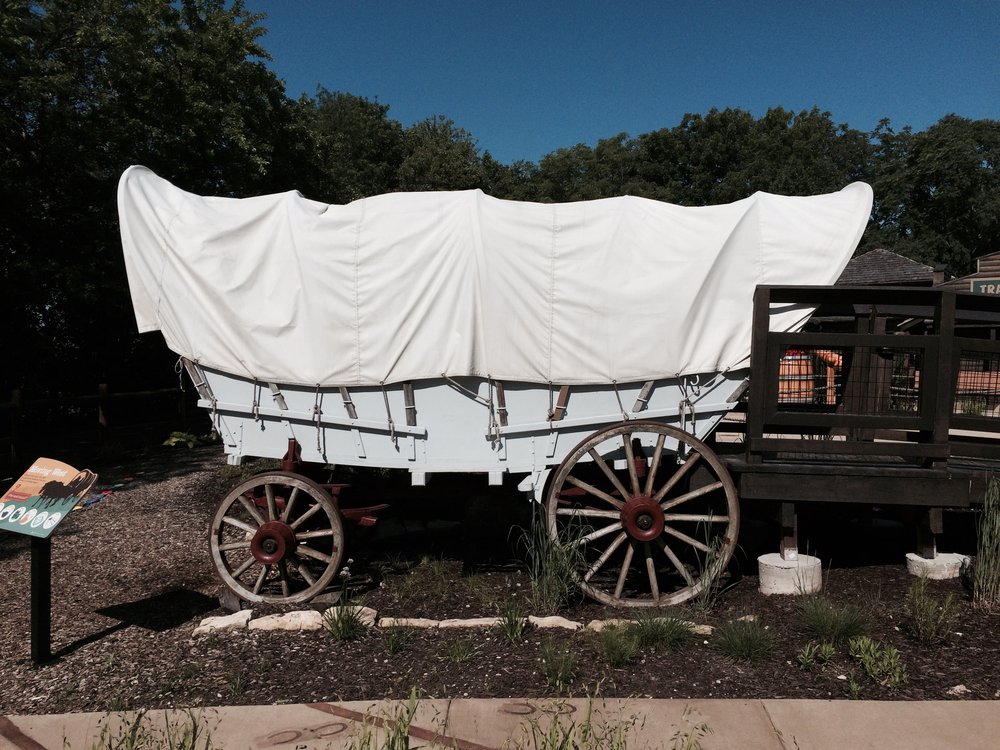
People today tend to associate western travel with the Conestoga wagon, and with good reason. Whether pioneers traveled on a water route or overland, the Conestoga wagon was indispensable for all or part of the journey and served as both a moving van, and, when they were settled, a utility vehicle. Captain Joseph Naper and his brother John traveled to Illinois using a water route. Being sea captains and shipping merchants, they must have thought this choice was the safest and easiest. But it was by no means a straight shot—the journey took them from Ashtabula, Ohio and up around the Great Lakes until they reached Fort Dearborn in Chicago. From there they made the final three day trip to the settlement in a Conestoga wagon. Many families who later joined Naper’s Settlement traveled overland, which often meant using one of the trails leading from the East to the western frontier. The National Road, which linked Cumberland, Maryland with Vandalia, Illinois was the first frontier trail financed by the federal government. A trip on the National Road would take several weeks in a Conestoga wagon, which, on a good day, could haul four tons twenty miles. A wagon like this one required at last four horses, and while it could provide shelter in bad weather, family members walked along side it during the day. The wagon bed even had a boat-like shape, and could be used to float across rivers that pioneers had no choice but to cross on their way west.